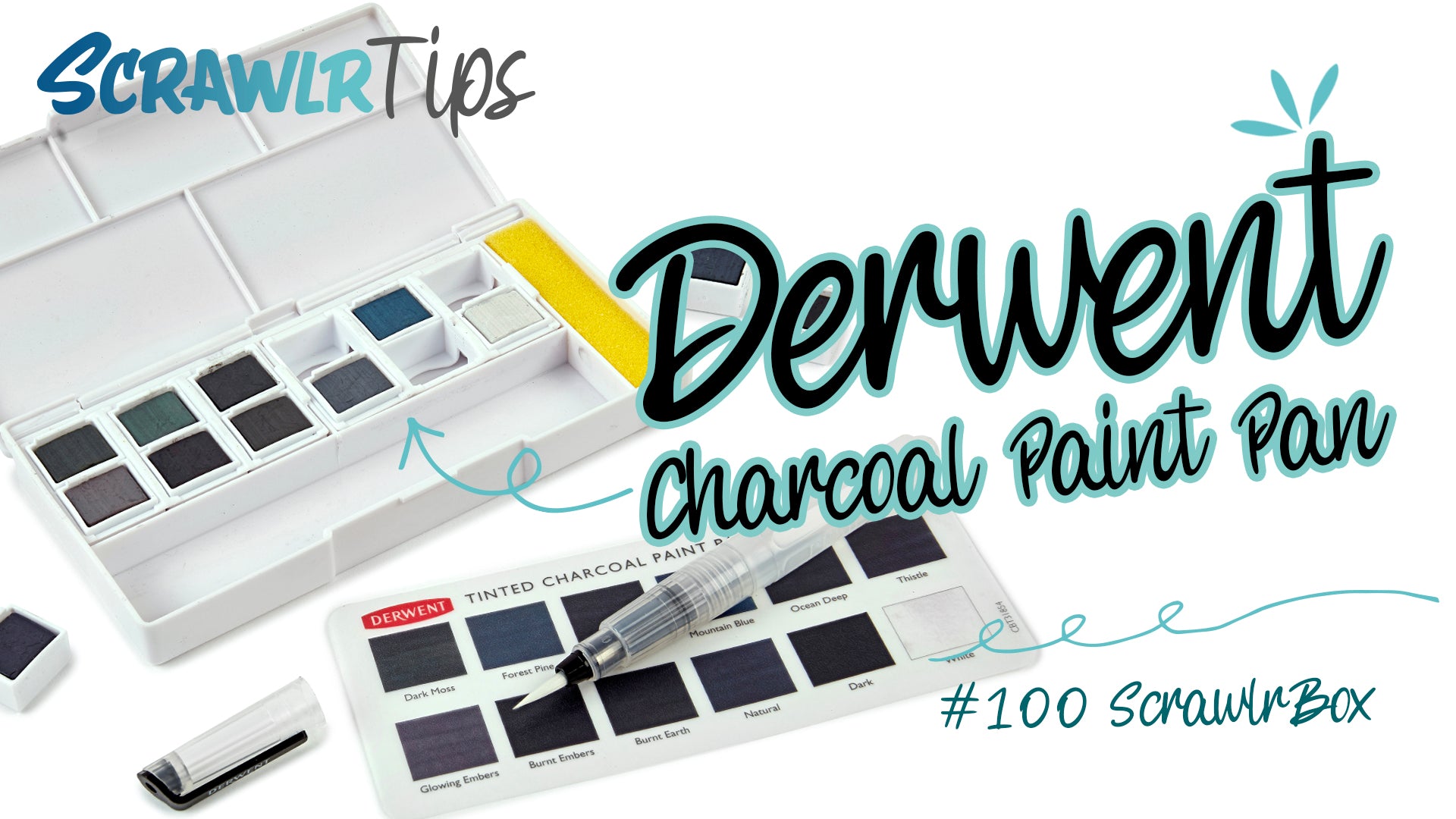ScrawlrTips

Derwent Tinted Charcoal Paint Pan Set
Featured In #100 ScrawlrBox
We realise you may have never seen or used products like this before so we have put together a few hints, tips and techniques to test out and get the best from these supplies.
This beautiful set of 12 tinted charcoal paints come in deep, muted transparent tones plus a white pan for highlighting. These lightfast professional grade water-soluble charcoal colour blends like a dream and is easily mixed so you can create some lovely atmospheric and expressive artwork.
They dry down with a matte, textured finish. This set comes complete with water paintbrush, a sponge and palette making it ideal for art-ing on the go. The pans vegan friendly and are also refillable so you can keep the palette to be re-used over and over.
Watch The Tips & Tricks Video Here

Things To Try...
Swatching! Activate with a drop of water. This way you can see all these muted colours come to life! They create a wonderfully moody colour palette.
Sponge. The sponge included in this set is intended for cleaning your brush while using on the go. However, you can use it for other things too! Use it to apply large areas of water for a wet-on-wet techniques. You can sweep the damp sponge into the paint to fill your page with larger areas of colour for backgrounds. Dab the smaller end into the wet paint and stamp onto the page to take advantage of the texture.
Add Salt. Create even more delicious texture by sprinkling on some salt. While the paint is still wet on the page, sprinkle on some salt. This will soak up the pigment in the areas it falls on. Allow it to dry completely, then gentle brush off with your finger or a dry paintbrush. The texture left depends on the salt you use- a finer salt will result in a finer texture.
Advanced Salt Tip: Granulation. You can create a granulated pigment effect with your watercolours by adding salt to the water you paint with. Add the salt to warm water, mix throughly and let it cool. It creates some really lovely effects once dry.
Use Dry:Theses paints are made of charcoal, so if you want to get a bit more hands on, tip them out of their pans and use like regular charcoal for added texture. Note: once wet inside the pan it’s very hard to get them back out in one piece!
You can also use this pigment to fill your brush with to create a paint pen. By using the ‘Dark’ pigment you can create a pen for outlines, or by using the ‘White’ pigment you can use for adding highlights. The less water you add, the darker the pigment will appear.
The white paint isn’t like regular watercolour. It’s slightly more opaque than a regular watercolour so you can use it on top of the darker tones to to add highlights. The less water you add, the thicker the paint will be so you can really make those whites pop!
Smudge It. It’s possible to smudge just like traditional charcoal. You can use either a paper tortillon or just your fingers to smudge and the charcoal across the surface of your page once dry.



